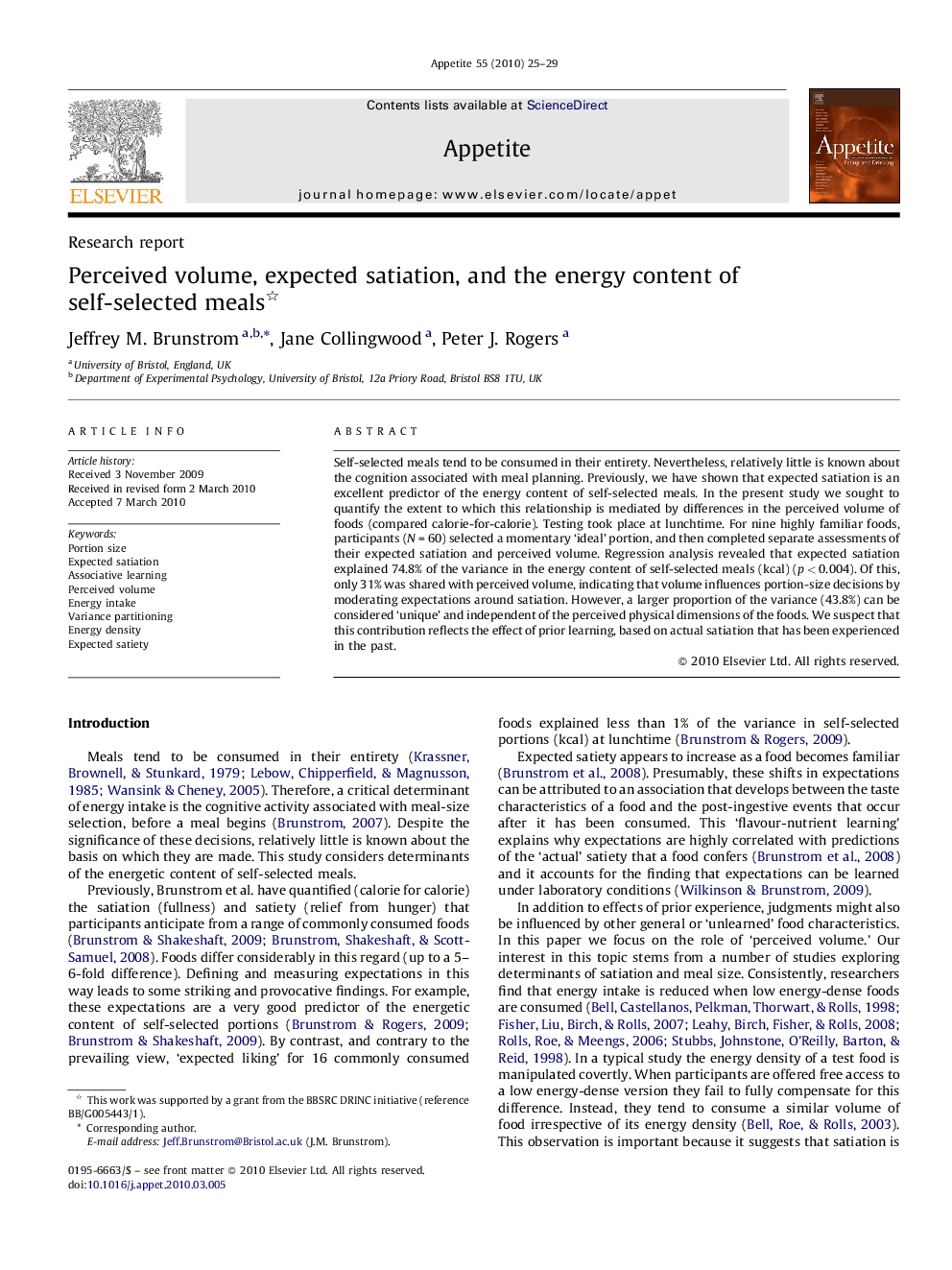| Article ID | Journal | Published Year | Pages | File Type |
|---|---|---|---|---|
| 940635 | Appetite | 2010 | 5 Pages |
Self-selected meals tend to be consumed in their entirety. Nevertheless, relatively little is known about the cognition associated with meal planning. Previously, we have shown that expected satiation is an excellent predictor of the energy content of self-selected meals. In the present study we sought to quantify the extent to which this relationship is mediated by differences in the perceived volume of foods (compared calorie-for-calorie). Testing took place at lunchtime. For nine highly familiar foods, participants (N = 60) selected a momentary ‘ideal’ portion, and then completed separate assessments of their expected satiation and perceived volume. Regression analysis revealed that expected satiation explained 74.8% of the variance in the energy content of self-selected meals (kcal) (p < 0.004). Of this, only 31% was shared with perceived volume, indicating that volume influences portion-size decisions by moderating expectations around satiation. However, a larger proportion of the variance (43.8%) can be considered ‘unique’ and independent of the perceived physical dimensions of the foods. We suspect that this contribution reflects the effect of prior learning, based on actual satiation that has been experienced in the past.
